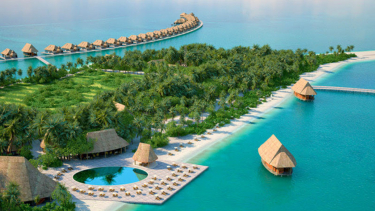- Pexels
Jakarta – According to recent statistics, the global human sex ratio is about 1:1, with slightly more men than women.
For every 100 women, there are 101.8 men, meaning men make up 50.4% of the global population.
This includes Nepal, the countries of the former Soviet Union (Latvia, Lithuania, Ukraine, Russia and Belarus) and El Salvador.
Some of these countries have a lower proportion of men due to the impact of war (especially Soviet countries) and emigration. countries where women outnumber men.
Mreover, gender is an important consideration for a country's development.
It shows how power structures and social norms impact the opportunities available to men and women.
Understanding gender ratios and the challenges each gender faces in accessing economic resources and services helps in implementing targeted interventions.
Gender imbalance reports also enable a country to implement interventions that limit the impact of sex ratio imbalances.
Well, here are some countries where men far outnumber women:
1. Qatar
Negara Qatar
Male residents account for up to 75% of the population in Qatar. Qatar, located on f’s northeastern coast, has a population of about 2.8 million people, of which 2.1 million are male. According to the World Bank, the proportion of men in Qatar rose from 64.5% in 2003 to 76.7% in 2011, before dropping to 75% in 2019
The skewed gender ratio in Qatar is mainly because of immigration. Of the country’s total population, over 80% are foreigners, mainly from South Asian countries like India, Nepal, and Bangladesh. Most of the foreigners coming into the country are male laborers seeking to work in construction sites and industries.
2. The United Arab Emiratest
Burj Khalifa, Dubai, Uni Emirat Arab (UEA).
- Pixabay
The UAE, located on the eastern part of the peninsula, has a population of about 9.9 million people as of 2020. Of the total population, 6.8 million or 69% are men. The country has experienced a mixed growth in the proportion of men over the years.
According to recent data, the proportion of men has been declining in the last decade (from 74.8% in 2010). The UAE had the world’s highest proportion of men between 1994 and 2008.
Like Qatar, immigrants and expatriates in the UAE account for over 85% of the total population. At 21.71, the country has the world’s highest net migration rate.
Most immigrants coming into the country are males seeking to work in industries created by the booming oil.
3. Oman
Oman, another Arabian Peninsula country, has a population of approximately 4.8 million people, of which 3.2 million or 66% are male. About 2 million people in the country are immigrants and expatriates. Omani’s fast-growing economy, dependent on oil, has attracted many foreigners, mostly males from India, Bangladesh, and Pakistan.
Oman also has a young population, with 43% under the age of 15. Slightly more males (1.05/female) are born, and the majority survive to adulthood. There are 110 males for every 100 females between 15 and 24 years and 138 males for every 100 males between ages 25 and 54.
4. Bahrain
Bahrain is geopolitically part of the Arabian Peninsula. It is Asia’s third-smallest country by area and has a population of about 1.6 million people. Bahrain’s population is highly skewed, with men accounting for 64%. According to the World Bank, the proportion of men in the country is rising steadily, from 61.6% in 2014 to 64% in 2019
Over 50% of the people living in Bahrain are expatriate communities. Indians, especially from Kerala, are the largest non-nations, accounting for close to 50% of the immigrant community. Besides immigration, more males than females are registered at birth, with the majority of the males surviving to adulthood.
5. Maldives
Maldives, negara indah ini sedang dilanda krisis politik.
- maldives.com
The Maldives is a small country in South Asia with a population of 516,000 people. However, the majority of the population (63%) are males, making it the country with the highest male proportion outside of the Arabian Peninsula.
The Maldives is a patriarchal or male-dominated society, with a preference for boys/men. Only a few women hold key positions in government.
Apart from being a male-dominated society, Maldives is also home to 178,000 immigrants and expatriates. The non-locals account for about 34% of the total population. The majority of these immigrants are male workers from Bangladesh, Sri Lanka, India, and Nepal.
6. Kuwait
Kuwait, located on the Arabian Peninsula, has a population of about 4.5 million people, of which about 3 million are expatriates. Expatriates and immigrants account for over 70% of the Kuwaiti population.
Most of these expatriates are male workers attracted to the country by the rich oil-driven economy.
Kuwait has the world’s 6th largest oil reserve and its currency is the world’s highest-valued currency. The expatriates are mostly men because the majority come from Arab countries where it is the responsibility of the male to provide for his household.
7. Saudi Arabia
Saudi Arabia is the largest country on the Arabian Peninsula, with a population of about 34 million people, including about 10 million non-nationals. The proportion of men in the country is increasing steadily, but at a slower rate, from 54% in 2000 to 58% in 2019.
Saudi Arabia is a gender-segregated country, with strict restrictions on women’s rights and freedoms. Most women are under the guardianship of men who control every aspect of their lives from birth to death.
Other countries with a significantly large proportion of men are Equatorial Guinea (56%), Bhutan (53%), and Djibouti (53%).




































